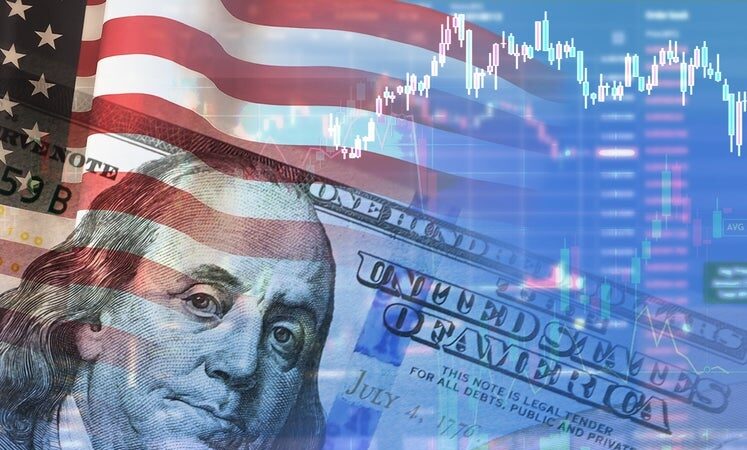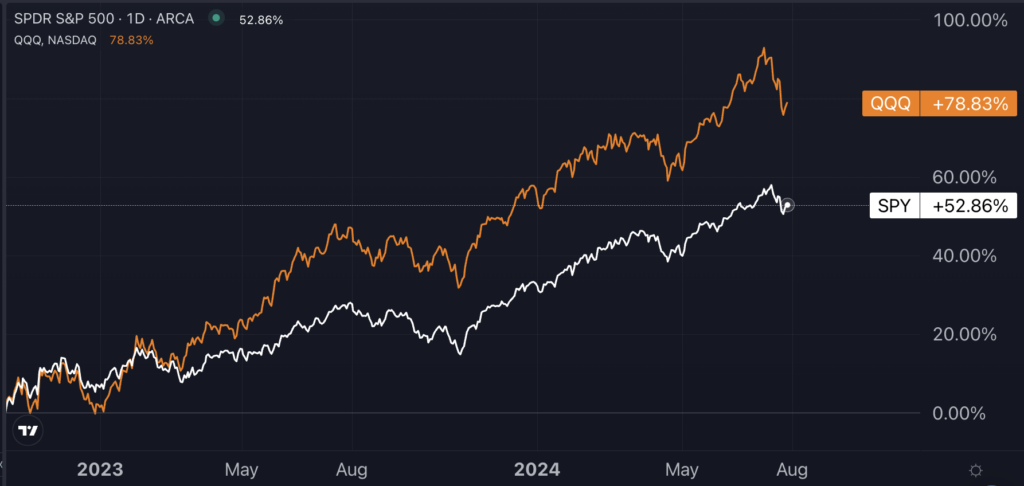If Economic Performance Were An Olympic Sport, ‘US Economy Would Win Gold,’ Says Market Veteran – Invesco QQQ Trust, Series 1 (NASDAQ:QQQ), SPDR S&P 500 (ARCA:SPY)

Prominent economists and analysts continue to emphasize the historic and extraordinary performance of the American economy in recent years, despite the significant hurdles posed by high interest rates.
Last week, the Bureau of Economic Analysis reported a surprising real GDP growth of 2.8% in the second quarter, doubling the growth rate of the first quarter and surpassing analysts’ already optimistic expectations of a 2% increase.
American Consumers: The Real Champions
“If there were an Olympic competition for overall economic performance, the US economy would win gold,” wrote veteran Wall Street investor Ed Yardeni in a note published Monday.
Even though, as of the morning of July 29, American athletes were only fifth in the official medal standings of the Paris Olympic Games for the number of gold medals won, Yardeni drew a sports parallel, suggesting that American consumers are stealing the show on the podium.
“If there were an Olympic competition for consumption, American consumers would win gold, silver, and bronze,” Yardeni noted, highlighting that real consumer spending on both goods and services reached record highs during Q2.
The best way to gauge the performance of the U.S. economy is by tracking real consumption per household, which is the broadest measure of Americans’ standard of living. It rose to a record $119,400 during Q2 2024, tripling since the end of the 1950s.
“There aren’t enough millionaires and billionaires to bias this series, in our opinion. Besides, once they’ve bought their mansions and yachts, the rich don’t eat much more than the rest of us working stiffs,” Yardeni added.
He explained that consumer spending is driven by real incomes. The historically tight labor market has fueled real wage gains, while rising interest and dividend incomes have further boosted real incomes. Meanwhile, rising asset prices have decreased the need to save, leaving more after-tax income available for spending.
The boom in consumption is partly fueled by retired Baby Boomers saving less and spending down their net worth. Meanwhile, younger generations are likely spending most of their current incomes, which are being boosted by the transfer of inherited wealth to them.
According to the latest OECD data, shares and other equities make up to 39% of overall U.S. household wealth.
Since the trough of 2022, the U.S. stock market, as indicated by the S&P 500 Index, has enjoyed an almost two-year-long bull market, regaining record highs. The SPDR S&P 500 ETF Trust SPY, which closely monitors the S&P 500 Index, has rallied by 53% since October 2022.
Tech stocks, as tracked by the Invesco QQQ Trust QQQ, have performed even better, rallying 78%.

Image: Benzinga Pro
Immaculate Disinflation
The U.S. economy’s performance over the past few years has been especially impressive, Yardeni highlighted. Despite numerous hurdles, including the tightening of monetary policy and geopolitical turmoil, the economy has defied predictions of a recession.
Furthermore, inflation has moderated relatively quickly despite the historically low unemployment rate. In other words, it didn’t take a recession to subdue inflation.
“The U.S. economy has achieved a rare feat,” Yardeni said, describing it as “immaculate disinflation.”
Yardeni explained that businesses are hiring and investing, consumers are spending, and the labor market remains robust. He suggested that the economy’s sensitivity to higher interest rates has markedly declined, as evidenced by the rising investment and spending on technology.
The veteran analyst highlighted that the high-tech spending powering the economy now should propel labor productivity in future quarters, fueling the economy’s growth engine.
Yardeni remains confident in the disinflation trend and welcomed the latest statistics on the Personal Consumption Expenditure (PCE) price index released last week.
Although the Q2 PCE was slightly hotter than expected, the trend remains encouraging, with headline and core PCED falling to 2.5% and 2.6% year-over-year, respectively, in June.
“PCE inflation is getting very close to the Fed’s 2.0% target,” Yardeni said. On a three-month annualized basis through June, core PCE is up just 2.3%, while headline PCE is up 1.5%.
The veteran analyst expects both headline and core PCED inflation will fall below 2.5% during the second half of 2024.
Read now:
- Homebuilder Stocks Rally To Record Highs On Rate-Cut Frenzy But Housing Sales Still Struggle
Photo: Shutterstock
© 2024 Benzinga.com. Benzinga does not provide investment advice. All rights reserved.






